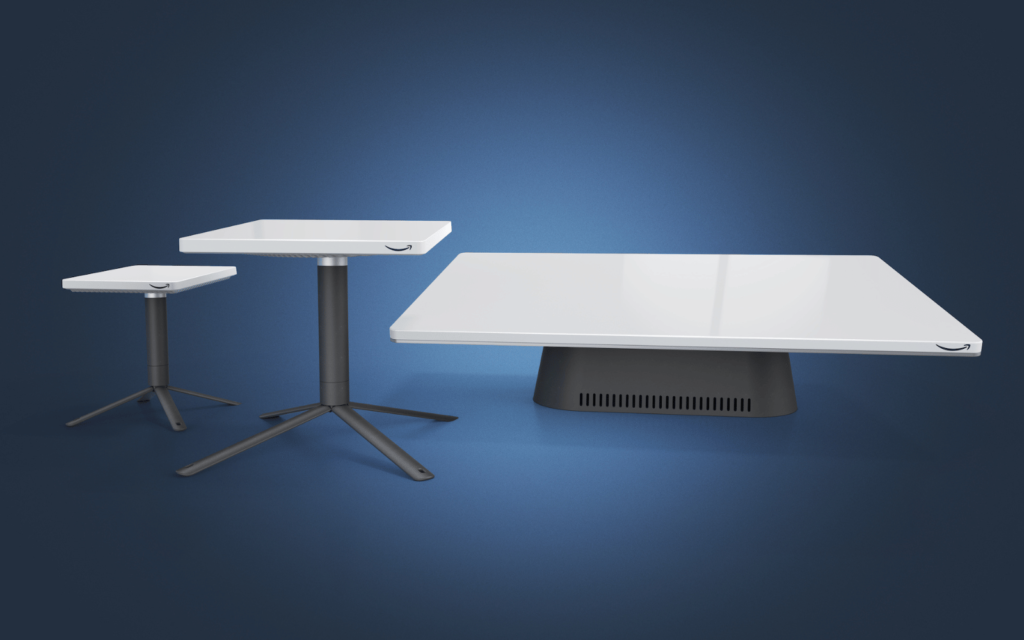Amazon and its subsidiary Kuiper Systems have unveiled the first official images of its Project Kuiper terminals for its low-Earth orbit-based satellite internet system.
Kuiper Systems was founded in 2019, right around the time Elon Musk’s SpaceX launched its first Starlink satellite into orbit. Coincidence? Probably not. Does it matter? Also no.
Amazon makes smart tables now?

If you couldn’t immediately tell from the images, these are not tables but renders of its Project Kuiper terminals. Renders of engineering models at that, so the final things might look different. But even from the renders, the resemblance to Starlink’s terminals is rather glaring.
The terminals will come in three flavours. The smallest (seen above) tips the scales at just half a kilogram with its square facade measuring around 18cm. It will reportedly offer connection speeds of up to 100Mbps (megabits per second) and is designed with affordability and portability in mind. Amazon neglected to mention exactly what it considers to be affordable, however.

The ‘standard’ user terminal will weigh around 2.5kg and feature the same square face, measuring roughly 30cm across. This one will offer connection speeds up to 400Mbps. Curiously, Amazon hasn’t provided specific consumer prices yet but it did say it “expects to produce these terminals for less than $400 each.” Hopefully, the end-user price won’t be too much more.
Definitely not a rooftop table

Then there’s the biggest boi, meant for government or enterprise users, meaning it’ll be way more expensive. No weight was given but if the concrete slab it’s sitting on in the renders is anything to go by, it’ll have some heft. Its rectangular 30cm x 77cm face will facilitate speeds of up to 1Gbps.
While those speeds might sound impressive, anyone on Rain’s network or familiar with Starlink’s operations will know to take any advertised speeds with some salt. The classic ‘up to’ preceding the given speeds should be an indication that they are the theoretical bandwidth limits and not the average speeds users should expect.
Read More: Starlink: SpaceX’s new internet service could be a game changer in Africa
Amazon also announced that its Project Kuiper terminals are powered by an in-house-designed baseband chip, codenamed Prometheus, which it will also use in its satellites. This chip will supposedly support up to (there it is again) 1Tbps of traffic. So maybe it won’t fall victim to the same network congestion as Rain or Starlink.
We wouldn’t hold out hope that Amazon’s Project Kuiper will arrive in South Africa anytime soon. Putting aside the fact that it still needs to launch prototype satellites later this year, test them, then mass-produce them, it will first have to go through the regulatory hell that is ICASA (Independent Communications Authority of South Africa). Starlink hasn’t managed that yet. There is a small possibility that Amazon’s expansion into SA might make that process smoother but there’s no word yet on when that is happening.
Source: Amazon




